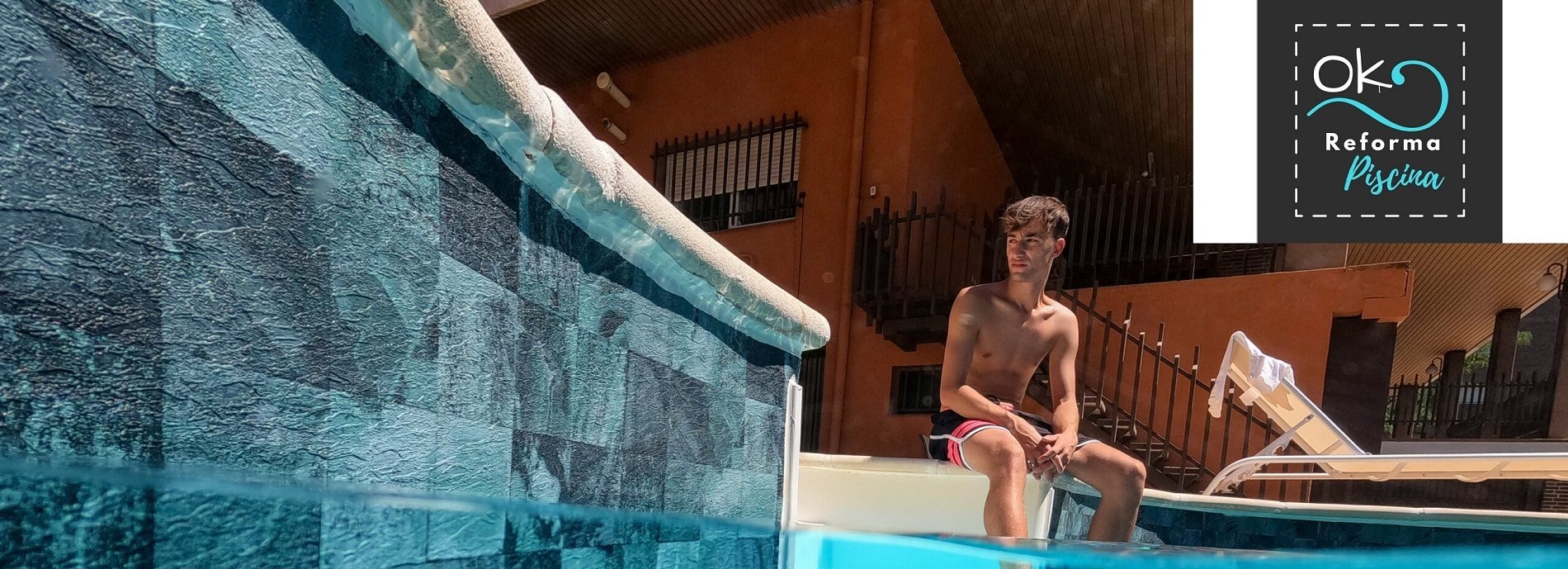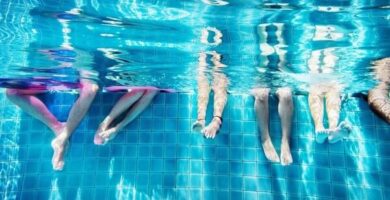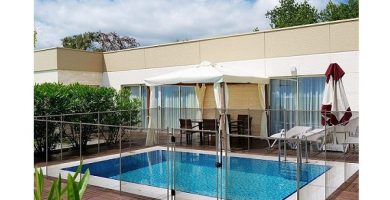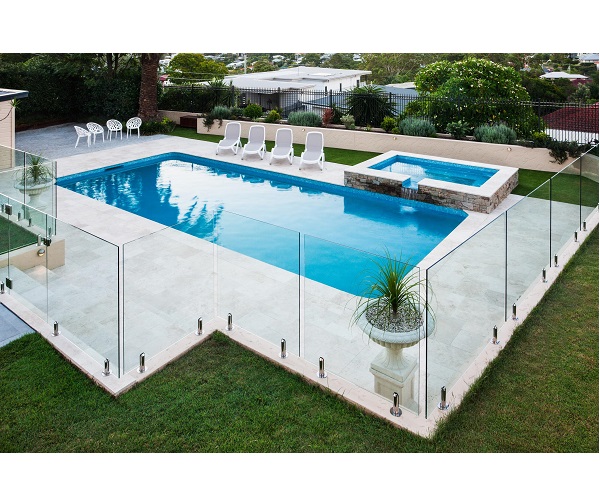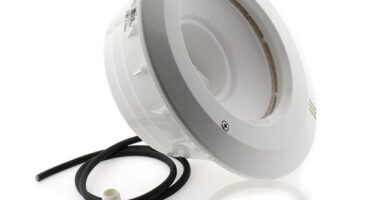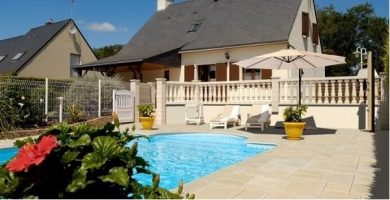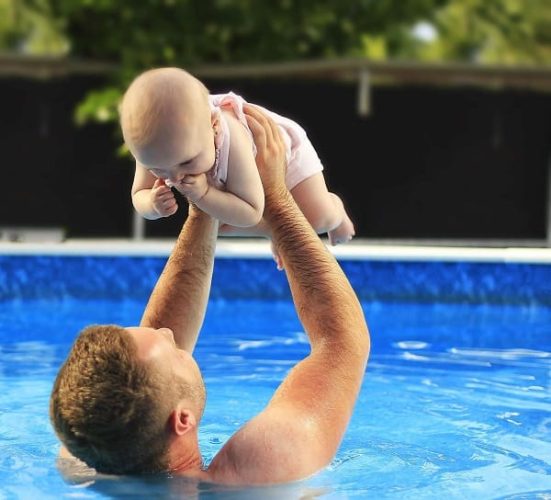
Table of contents of the page
En Ok Pool Reform We want to provide you with an entry about Swimming pool regulations, standards and safety tips
How can I maintain safety in swimming pools?

Safety in the pool is paramount and unquestionable
To begin with, as a reminder, you never play with people's safety, so never economize on the investment in the exterior of the pool.
So, what has been said, In pool safety, it is not optional to skimp on resources; the damage caused can be much more expensive and irreversible.
Points to check for the safety of a private pool
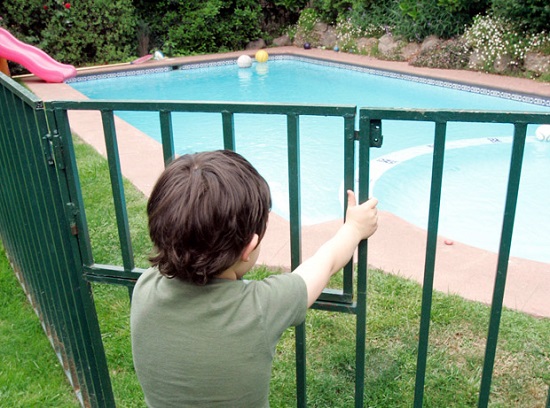
Minimum guidelines to confirm that we have a safe pool
Pool safety conditions
- Have at least one safety element and check its correct operation.
- Ensure the correct use and effectiveness of pool products.
- Monitoring the condition and cleanliness of the water.
- Check pH and chlorine level.
- Ensure that there are no risks of entrapment.
- Avoid and minimize slipping risks, which is why you must verify that the floor is non-slip, waterproof and washable in the transit area around the pool.
- Check glass tightness characteristics.
- Prevent drowning risks.
- Make sure there is no corrosion.
- Check the safety status in the construction and installation of the pool.
- Stairs with steps with grade 3 non-slip flooring to facilitate entry and exit from the pool.
- Perimeter fence of at least 80 cm high (Decree 209 of 2003) that separates the recreation area from that intended for the transit of bathers around the pool. It is suggested that the bars be separated no more than 12 cm, that is, a child's head cannot fit.
- Perimeter fence door must have a plate or lock on the top to prevent unscheduled access by children (swimming pools in condominiums or houses).
- Maintain a recreation area and one for the transit of bathers, free of objects that could cause accidents (bottles, cans or others).
Video Ensuring Safety in Swimming Pools
TOP 10 Points to guarantee Safety in Swimming Pools
- Next, we show you 10 points with which you will guarantee safety in swimming pools, so that your pool will become a safe space.
Safe Pool: Learn CPR and First Aid Techniques
What is CPR?
Take a pool CPR course
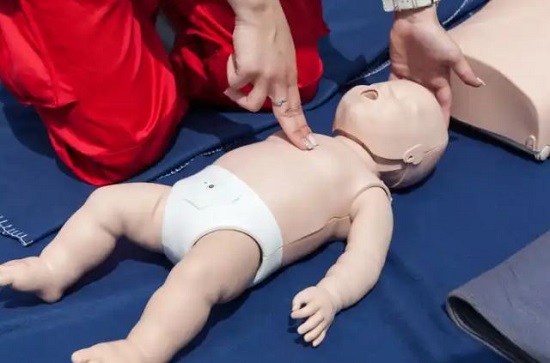
CPR is cardiopulmonary resuscitation. An emergency medical technique in which the person performing the technique attempts to improve the breathing of the choking person with chest compressions and mouth breathing.
Learn CPR and basic water rescue skills.
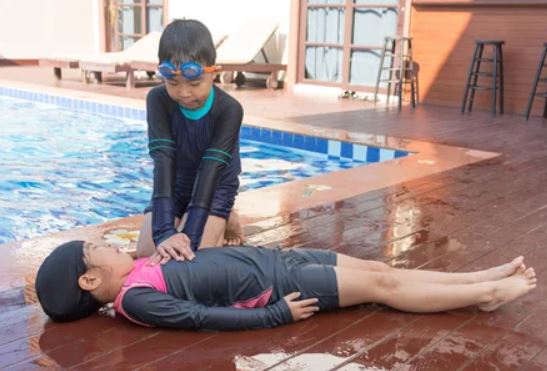
- In fact, it is essential to have basic knowledge to be able to cope with an accident in the pool and how to respond in an emergency without running the risk of drowning.
- Truly, this procedure should be learned by everyone, as it increases the chances of survival of the drowning person..
- What's more, this technique has saved a large number of lives, especially in swimming pools and beaches.
- And, on top of that, it is a very easy maneuver that even children can do.
ALARMING facts to consider about child pool drowning
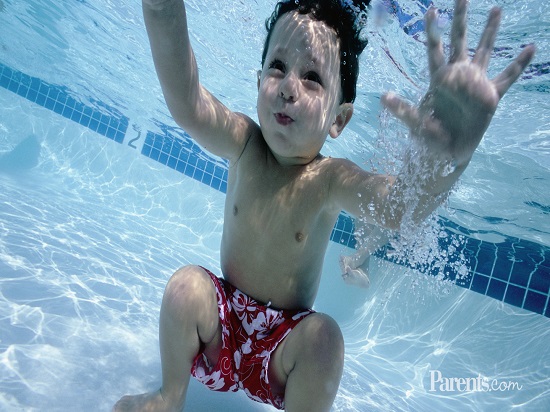
Facts about drowning in children
- Drowning is the leading cause of injury-related death among children ages 1 to 4 years.
- Definitely, around 350 children under the age of five drown in swimming pools each year across the country. Most deaths occur in June, July and August; most in backyard pools. Among unintentional injuries, drowning is the second leading cause of death in this age group after motor vehicle accidents.
- And it is the third leading cause of death related to unintentional injuries among children under 19 years of age.
Tips to avoid drowning children in swimming pools

Safe pool for children preventing child drowning
Drowning is one of the most serious childhood accidents since it can cause death or significant consequences.
There are several measures to minimize the risks, but the most important is the supervision of the small child by an adult and knowing first aid techniques to be able to act quickly if necessary.
Dr. Carles Luaces, head of the Pediatric Emergency Service at the Sant Joan de Déu Barcelona Hospital, explains the main measures that we must take to avoid drowning and remembers that we should not underestimate the risks since too much water is not necessary for the child could drown.
How to act in case of drowning depending on WHERE the accident occurs

How to act in case of drowning if it occurs in a public or community pool
- ,First, we will always take the affected person out of the water and then we will perform a resuscitation maneuver if he or she is not in good condition and then as quickly as possible notify the lifeguard in charge, since he will act professionally in the situation.
Yes How to act in the event of drowning if it occurs in a public or community pool if there is no surveillance service
- In this case, As soon as we remove the victim from the water and have applied first aid, the priority will be to call the emergency telephone number (112) and later we will continue carrying out the supposed aid while medical attention arrives.
First aid in case of drowning swimming pool

Assistance in case of swimming pool drowning
If you encounter a case of drowning, you must evaluate consciousness and breathing to know if it is in cardiorespiratory arrest and then perform the necessary measures. cardiopulmonary resuscitation maneuvers or CPR aimed at keeping the brain oxygenated while the professionals arrive.
In these cases the probability of survival is much higher (with respect to other cases of CRP such as those caused by a heart attack or a traffic accident) since the neurons take longer to die due to low body temperature. It is recommended that if you have spent less than 2 hours underwater, the maneuvers be attempted. There have been cases of people who have remained underwater for more than 40 minutes and have been revived. Below you have links to several cases:
However The first thing is to get the person out of the water. If you can do it safely, do it yourself, always carry a flotation device with you (a boat, a mat, a life preserver...) and if you don't see it clearly, don't go in, ask other people for help and call 112. Don't risk it, There have already been many cases of drowning of people who were going to carry out a water rescue:
Pool drowning performance
How to act in pool drowning resuscitation
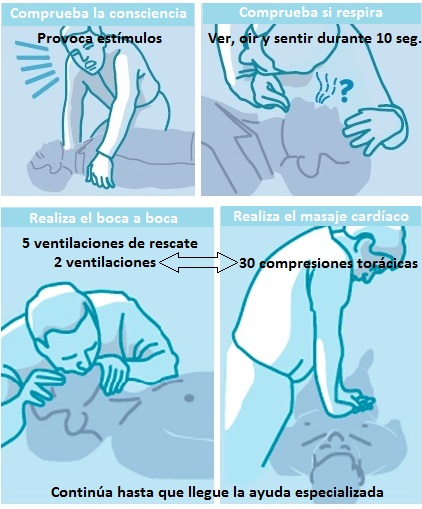
- The first step is to check the level of consciousness, provoke sensitive stimuli to see if he reacts.
- Secondly, if you don't react, check if he's breathing, perform a neck extension to open the airways and bring your ear closer to his nose and look at his chest. If you don't feel anything, the person is in PCR.
- Now you must perform 5 ventilations mouth to mouth, opening the airways and pinching the nose. The goal is to quickly raise the level of oxygen in the blood. These ventilations are called rescue ventilations because sometimes they are enough to reverse the arrest. Especially in the case of children.
- Then 30 compressions strong in the center of the chest, in the sternum, with both hands, arms well extended and perpendicular to the ground and supported by the weight of your body. It is normal for water to come out of the mouth with cardiac massage since the lungs are also compressed and may be full of water. Tilt your head so the water runs out.
- Next, perform 2 ventilations again and continues with cycles of 30 compressions and 2 ventilations until assistance arrives.
- If there is a defibrillator, request it and install it as soon as you have it. Take the person to a dry area and dry their chest well before applying the patches.
CPR for babies and children (under 8 years old)
CPR babies and children: save from drowning in the pool
- If the drowned person is under eight years old, you should know the differences in resuscitation maneuvers. You can see them in the following video
adult CPR
Adult CPR: Save from Pool Drowning
First aid in the pool: use a defibrillator
First assistance in the pool: how to use a defibrillator
Introduction to swimming safely in the pool
When can you introduce a baby to water?
You can start introducing your baby to water as soon as he or she feels comfortable, as long as his belly button or circumcision has healed.
When to take swimming lessons for children

According to the American Academy of Pediatrics (AAP), a couple of small studies have found that Swimming lessons for children ages 1 to 4 can reduce the risk of drowning. But swimming lessons are not a reliable way to protect your child (and are not recommended for children under 1 year old). There is simply no substitute for adult supervision when it comes to pool safety.
If you decide to enroll your child in a swimming class, look for a program that follows national guidelines for swimming instruction.
Among other things, these guidelines advise instructors not to immerse young children and encourage parents to participate in lessons.
And some children may not be ready to take swimming lessons until they are at least 4 years old.
Whether swimming lessons are right for your child depends on how often they are around water and their physical abilities.
Should the child take swimming lessons?
Pool safety key: Learning to swim and education in the pool

- The sooner they learn to float and swim, the sooner they will be able to react to unexpected falls, even though the fact that the child has taken swimming lessons It does not mean that we stop paying attention to them, since they can get tired or overconfident.
Educate the child so that he knows how to behave in the pool
Learning and education for a safe pool
- Children must learn as soon as possible to float first, and then swim.
- Even with this learning, we must not forget that possible accidents such as falls and blows can occur.
- Even poor digestion can cause shock in the little ones. Therefore, it is essential to keep in mind the 10/20 rule (this is a strategy that advocates that parents look at the water every 10 seconds and stay at a distance from it that they can cover in just 20 secondss)
Children's safety songs for swimming pools
Pool Rules
Children's songs Safety in the pool
In short, in this video you will be able remind children of the regulations to play in the pool with protection and safety through a children's song, so it will be a fun and pleasant way for themselves and to capture their own attention.
- How can I maintain safety in swimming pools?
- Introduction to swimming safely in the pool
- Pool safety for babies and children
- Safety in coronavirus pools
- Pet pool safety
- Procedures for action in the event of an accident in a swimming pool
- What type of pool safety systems to choose
- European safety standard for swimming pools for private use
- Swimming pool safety regulations of the Royal Swimming Pool Decree
- Safety rules for private pools
- Public pool safety regulations
- Community pool regulations
- When is it mandatory to hire a lifeguard?
Pool safety for babies and children
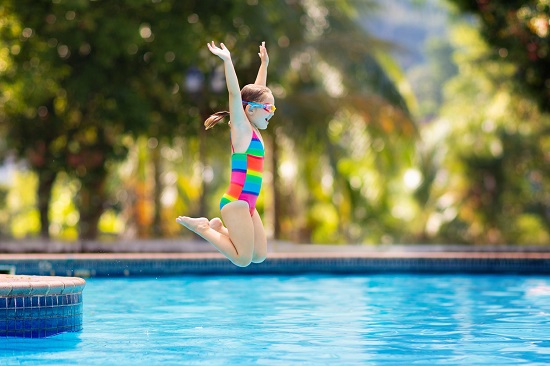
Get a good children's pool safety system

Then, further down, on this same page we will present all the archetypes of children's pool safety systems.
Safety fence around the pool
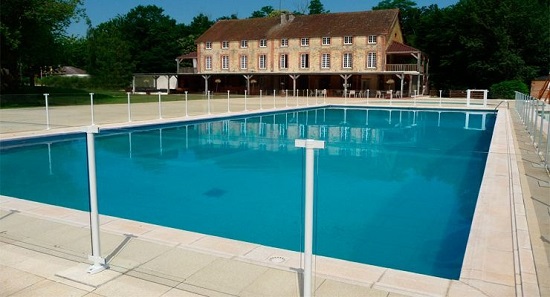
- Make sure your home pool is surrounded by a four-sided fence that is at least 1,20m high (4 feet).
Security system to cover pool drain

- Make sure the drain has an anti-clogging cover or another drain safety system, such as an automatic shut-off pump.
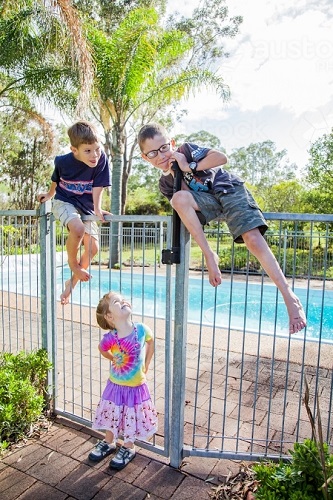
Detect pool risks and avoid them
- It should also have a self-closing door that opens away from the pool.
- Make sure the latch is at a height that children can reach.
- Always lock the door after each use and make sure there is nothing to encourage the child to climb the fence.
Pool chemicals

- Pool chemicals, such as chlorine, can cause skin irritation and rashes, as well as breathing problems similar to an asthma attack.
- On an informative level, according to a 2011 study, exposure to chlorine used in swimming pools during childhood may increase the risk of bronchiolitis.
Preferably treat the pool with salt water (salt chlorinator)
- The saltwater pool treatment is gentler on your baby or child's sensitive skin, but other risk factors and safety guidelines still apply.
Pool water temperature
Pool temperature with babies
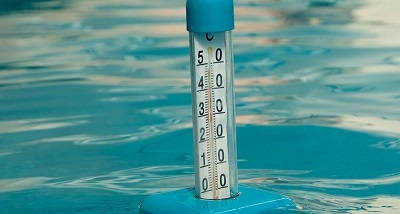
- Because babies have a harder time regulating their body temperature and also get cold very easily and can develop problems such as hypothermia, you will need to check the pool water temperature before allowing your baby in.
- Most babies are very sensitive to changes in temperature.
- If the water seems cold to you, it is definitely too cold for your little one.
- Additionally, hot tubs and heated pools are not safe for children under three years of age.
Constant surveillance for the safety of minor children under twelve years of age
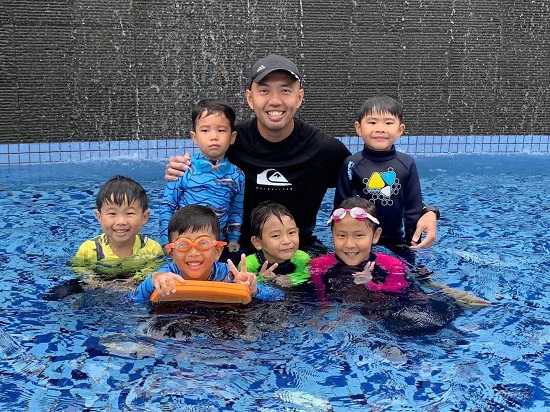
- Always, always supervise babies in and around a pool: Children under twelve years of age must always be accompanied by an adult.
- Always stay close enough to put a hand on the baby and do not lower the alert level, babies can drown in too little water.
- They should never be alone in the water, since their movements are more 'clumsy' and they will probably suffer constant falls.
- If the child remains standing, it is best to remain in a position the entire time.to children's pool, so that it can be handled alone, always being careful to be alert in case it falls.
- Do not use any electronic device, including your phone, that could take your eyes off or distract you while supervising your child around water.
10/20 standard in security surveillance for children's pools
Basically, the 10/20 rule is a strategy that advocates that parents look at the water every 10 seconds and stay at a distance from it that they can travel in just 20 seconds.
Pool safety check especially when there are BABIES before each swim
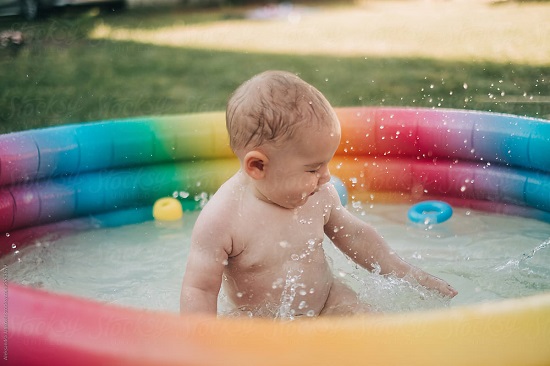
- Do not take your baby into a pool if the drain covers are broken or missing. Do a safety check at the pool every time before entering.
Safe care for baby inflatable pool
It's easy for a little one to lean over and fall headlong into these soft-sided water spots. Monitor carefully, empty smaller pools after use and fence off large pools for dipping.
Bathing your baby can be much easier if you join him in the bath.
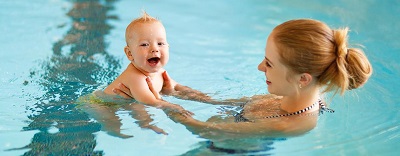
Teach the baby to swim
- Handling a wet, slippery body is a challenge, and being in the bathroom with your baby means more safety and security for everyone.
- It's important to minimize heat, so make sure air and bath temperatures are comfortable and appropriate for your baby's sensitive skin.
Bathing and feeding babies and children
Avoid baths just before or after feeding: If a baby is hungry, he or she will not relax or enjoy the experience, and if he or she is full from a feeding, there is a risk of him or her "throwing up."
Pay attention to the child's digestion
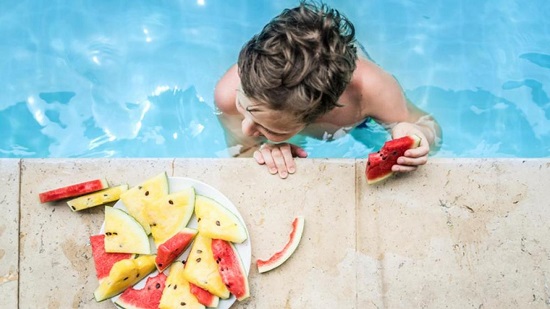
- Of course, the biggest danger that children face at the beach or in the pool is drowning. However, in addition to recklessness, there are other factors that can cause this to happen and to which we sometimes do not pay much attention, such as the case of digestion.
- The problem is not that the child immerses himself in the pool immediately after eating, as we have believed for many years, but that the so-called process of hydrocution. That is, when we are eating we spend a long time exposed to the heat. If, in addition, it is a large meal, our body reaches a high temperature. We have to prevent our body from immediately going from this high temperature to the water temperature, because then a heat shock will occur that can cause us to lose consciousness.
- Therefore, it is not necessary for children to go two hours without eating, far from it, the precaution is to approach the water with the child and gradually wet his arms, legs, face.
- neck...until we get his body temperature to drop and avoid any type of peligro.
More protection in the pool for children
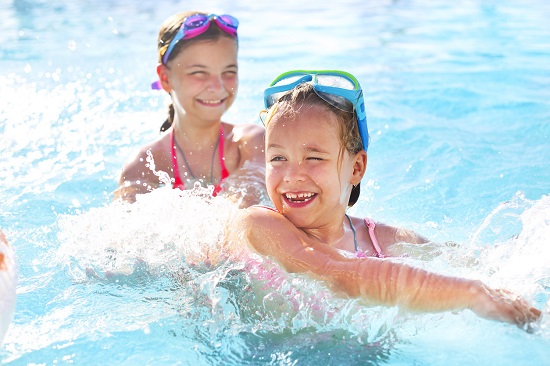
- Continuous surveillance.
- The installed security element must prevent the passage of children under 5 years of age.
- Reinforce the child with swimming classes.
- Check that the life jacket is appropriate for the child's size.
- Use approved toys.
- Once the bath is finished, toys should always be collected from the water so as not to attract the children's attention.
- Play in the part where you can stand.
- Avoid playing and running on curbs and near stairs.
Before swimming, inspect different points to be sure you have a safe pool.
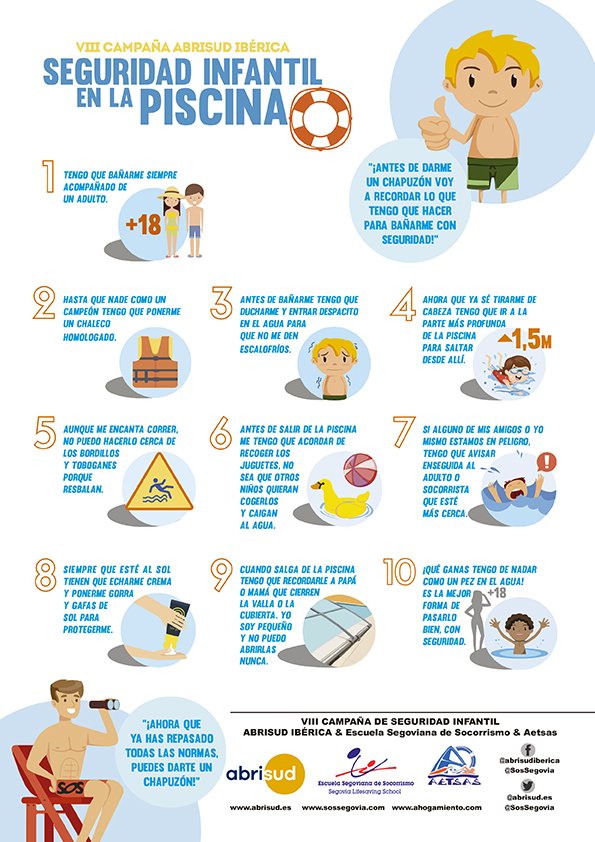
The 10 guidelines to follow for a bath with children in a safe pool
- I must always bathe accompanied by an adult.
- Until I swim like a champion I must wear an approved vest.
- Before taking a bath I must shower and enter the water little by little.
- Now that I know how to dive headfirst, I have to go to the deepest part of the pool to jump from there.
- Although I love to run, I can't do it near curbs or slides because they are slippery.
- Before leaving the pool I have to remember to pick up the toys.
- If I or one of my friends is in danger, I should notify the nearest adult or lifeguard.
- When I get out of the pool I must remind my parent to close the fence or cover. I am small and I can never open them.
- I really want to swim like a fish in water! It's the best way to have a good time, safely.
Continuous surveillance is the most effective security measure. Carrying out tactile supervision – ensuring that the child is always nearby – and organizing supervision shifts between adults are two good preventive measures so that carelessness does not cause an incident in the pool.
More safety points for bathing the baby in a pool
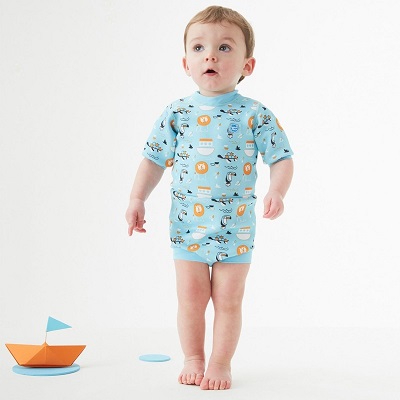
Neoprene suit for babies
Whatever the temperature, it makes sense for your little one to wear a wetsuit. You will be moving in the water, but your baby probably won't and will soon be cold. A wetsuit will save you time, although keep in mind that even in a warm pool, wearing a wetsuit, 20 minutes is about the maximum time you can expect to spend in the water. A full body wetsuit is also useful to protect your baby's skin from the sun if she is swimming outdoors.
TOP Price Neoprene suit for babies
[amazon bestseller=»Neoprene suit for babies» items=»5″]

Swim diapers for public pools
- Swim diapers are required for public pools.
- You can choose between disposable and washable.
Which swim diapers are best
- Washable ones are better for the environment and make financial sense if you plan to take your little one swimming a lot. Plus, a washable swim diaper fits snugly around your baby's legs and is worn with a washable cotton liner and a disposable paper liner that catches poop.
- Although, disposable swim diapers are more widely available, even at many public pools. If your baby is going to be in and out of the water many times over the course of the day - at a resort pool, for example - disposables are easier, although once you get used to traveling with a pair of cotton and Replacement paper liners, washable also work well.
TOP price Swimming diapers
[amazon bestseller=»Swim diapers » items=»5″]
Inhalation of water: baby safety in the pool, do not submerge under water

- Although babies can naturally hold their breath, they are likely to inhale water, which can cause symptoms such as suffocation, drowning or, at least, lung irritation. germs.
- Plus, germs can certainly be a problem if a baby swallows water. This is especially true if other babies have been in the pool and their poop has not been contained well with swim diapers.
What happens if a baby swallows some water?
Did you know that babies can drown in such a little about 1 or 2 inches water (1,54 or 5,08 cm)? . Babies do not have good control of their neck and muscles. Si even a small amount of water covers their nose and mouth, they won't be able to breathe.
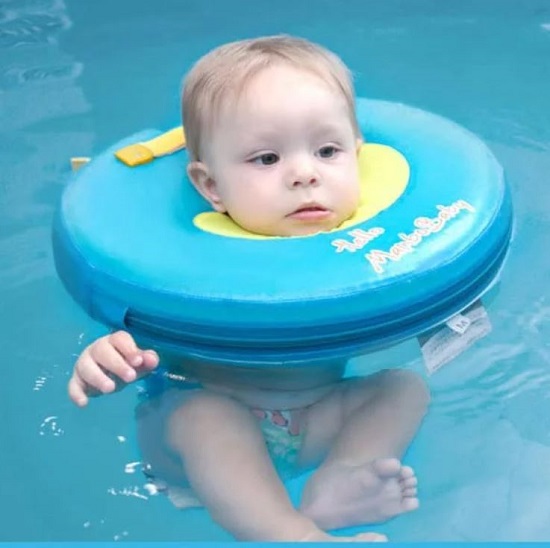
Safety in the water with elements that help buoyancy
Equip it with reliable baby pool safety devices
- Whenever you are around water, have your child wear a well-fitting personal flotation device (PFD) and do not rely on inflatable toys as they do not under any circumstances serve as an excuse to leave children unsupervised. an adult.
- On the other hand, it is important to ensure that they are of good quality and are homologated. In addition, you should always check that they are not punctured or broken before putting them on the child.
- Knowing this, we can begin to consider other elements that help our children feel safer in the pool, such as floats or sleeves. These are accessories that prevent the child from sinking in the water, however, we cannot give them the function of lifesavers, since they can break or become misaligned, ceasing to fulfill their function.
Child safety for swimming pools: Dive carefully.
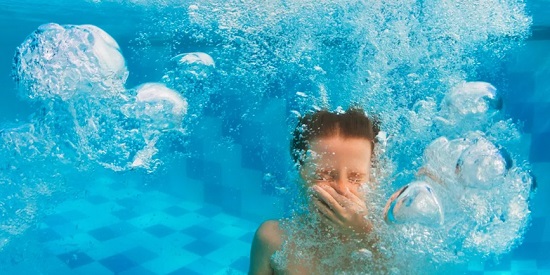
Children and adolescents tend to suffer the most wounds and injuries from reckless jumping. The consequences can be dire, from a more or less minor fracture to spinal cord injury or drowning if consciousness is lost. Knowing the depth of the pool glass is usually essential if you want to jump.
Lying in the sun.
The normal thing is to lie in the sun but what few people know is that it is important to change your position and even do some exercise such as stretching your muscles or walking to loosen up your body. Sunscreens should always be present and limit sun exposure between 12 and 18 p.m.
Footwear for protection in swimming pools

Appropriate footwear is important, especially if you are walking on wet ground such as the pool. Uncomfortable sandals can cause muscle injuries in the foot, knee and back.
If you witness a fall or an accidental jump, you must Immediately notify the emergency services and only help the injured person if you have the necessary knowledge. Manipulation, in these cases, can involve immobilizing the neck as well as avoiding spinal movements.

After bathing in the pool with the baby
- Rinse your baby with clean water after swimming to help prevent possible skin irritations and infections.
- Once dry, dress your baby, then distract him or her with a bottle or snack of some kind while you get dressed. If you are breastfeeding, consider a post-swim feeding at your times.
Ensuring the safety of our pool depends on us

Be proactive and get pool safety devices
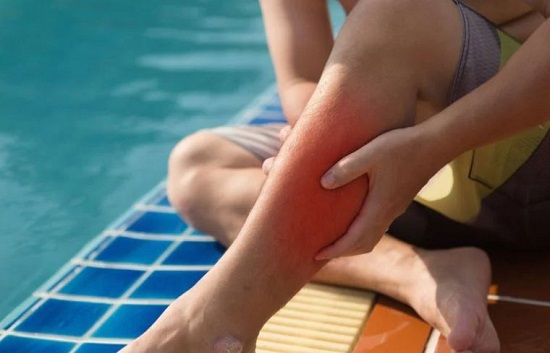
In any case, we are convinced that the most cautious attitudes when we want to avoid accidents in a swimming pool involve acquire basic safety elements necessary.
Conduct of bathers to ensure safety in swimming pools:
And at the same time, maintaining a proactive and cautious attitude towards safety in the pool.

- To start, prevent, reduce and try to neutralize all possible dangers as much as possible.
- Although, below, we will give you the essential safety tips in the pool.
- It is also important to make bathers aware that their attitude must be responsible and in accordance with good use.
- Another fundamental point is to acquire the necessary elements according to the assessment of the use of the pool, type of bathers, location, etc.
- Permanent supervision of adults, if there are minors bathing or playing near the pool.
- Never leave the door to the pool access gate open if there are minors who can enter the swimming area unsupervised (swimming pools in condominiums or houses).
- Respect the hours of use of the pool. Outside of these, maintenance work is carried out for which it can be dangerous to enter.
- Teach children to swim early or at least learn to float. This is not a substitute for adult supervision.
- It is recommended that small children use life jackets, appropriate for their age and weight; In younger children, those with a “floating hood” and straps that pass through the groin should be used to prevent them from coming off.
- Avoid the practice of boobies, bombs, etc., as they create a risk of accidents both for those who participate in these games (blows to the bottom, with cervical damage), and for those who swim calmly in the pool (a person falling on top of the pool). from them).
- Do not go near the drain pipe, especially in public swimming pools, where the suction force is greater due to the volume of water.
- Avoid running along the edges of the pool, which are usually wet and can cause falls in and out of the water.
- After eating, you should wait at least 1,5 hours before entering the water. During digestion, the body is allocating a greater amount of oxygen to this function and not to physical exercise.
- Never enter the pool under the influence of alcohol. Risk awareness, reflexes, strength and movements are altered by drinking.
- Avoid direct exposure to the sun between 11:00 and 16:00, since UV radiation is greater at that time.
- Apply sunscreen 30 minutes before sun exposure and reapply as needed.
Protection against pool fungus
Particularities of pool mushrooms
Fungi usually develop: on the edges of the feet, the soles of the feet, between the toes or on the nails; but it is also very common in the groin and mucous membranes.
Fungi usually produce: peeling, blisters, scabs, cracks, burning, itching, wrinkled skin, red or whitish skin, thickened skin, bad odor...
The most common areas where you can get infected are: floors for swimming pools, pool edges, saunas, public pool showers, changing rooms, gyms, public pools...
In addition, It must be taken into consideration that fungi may also be growing in the pool joints. Therefore, if you have a pool tile, you have to pay more attention to pool cleaning.
Later, if you click on the link you will discover everything about Mushrooms in the pool: Discover why it is so easy to develop fungus in the pool, what types exist, how to prevent and treat them,
Safety in coronavirus pools

Covid community pool security
Research carried out by Imperial College London shows that free chlorine reduces virus infection
An investigation carried out by a team of British virologists from the Imperial College London evidence that the pool water mixed with a percentage of Free chlorine inactivates the SARS-CoV-2 virus, which causes Covid-19, in 30 seconds. The study also suggests that the risk of coronavirus transmission in pool water is low.
Thus, there is no evidence that the virus that causes COVID-19 can be transmitted to people through water in swimming pools, hot tubs, spas or water play areas, since proper operation and maintenance (including disinfection with chlorine or bromine) of these facilities should inactivate the virus in the water.
Later, we leave you the link with all the news about: The chlorine used in swimming pools inactivates Covid in 30 seconds.
The use of a community pool in the face of the Covid-19 pandemic will depend on what each community of owners decides.
To do this, a Meeting must be held in which the opening of the meeting will be approved or not, depending on what the majority decides.
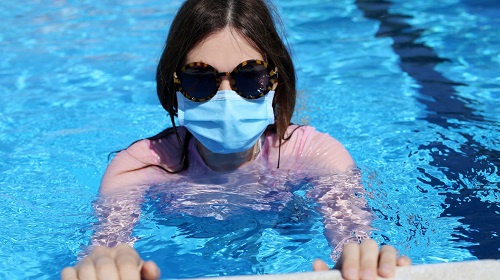
- The meeting will also decide What health and safety measures should all users follow? to guarantee the containment of Covid19.
- Limiting the capacity both in and out of the water, respecting the safety distance between people, restricting the visit of friends and family of the owners or wearing a mask when leaving the water will be some of these measures.
Safety in coronavirus pools: Hygiene and prevention measures in pools for collective use.
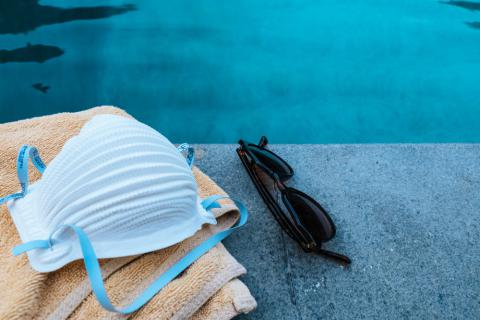
Covid pool protection precautions
- To begin with, without prejudice to the application of current technical-sanitary standards, In pools for collective use, cleaning and disinfection of the facilities must be carried out with special attention to closed spaces such as changing rooms or bathrooms prior to the opening of each day.
- Second, The necessary measures must be established to maintain the interpersonal safety distance of 1,5 meters, with the following maximum capacity, according to the following alert levels:
- a) At alert level 1, up to 100% in both outdoor pools and indoor pools, of the permitted capacity.
- b) At alert level 2, up to 100% outdoors and 75% in indoor pools, of the permitted capacity.
- c) At alert level 3, up to 75% in outdoor pools and 50% in indoor pools, of the permitted capacity.
- d) At alert level 4, up to 50% in outdoor pools and 30% in indoor pools, of the permitted capacity.
- Likewise, The different equipment and materials must be cleaned and disinfected such as glasses, corkscrews, class auxiliary material, perimeter fence, first aid kit, lockers, as well as any other in contact with users, that is part of the installation.
- The biocides to be used for surface disinfection will be those of product type 2, referred to in Annex V of Regulation (EU) no. 528/2012 of the European Parliament and of the Council, of May 22, 2012, relating to the marketing and use of biocides. Likewise, disinfectants may be used such as dilutions of freshly prepared 1:50 bleach or any of the disinfectants with virucidal activity that are on the market and that are duly authorized and registered.
- The use and cleaning of the toilets will be carried out in accordance with the provisions of paragraph a) of article 8.
- When using the swimming pools, efforts will be made to maintain due safety and protection measures. especially in the interpersonal safety distance between users.
- Likewise, in the living areas of the swimming pools, a spatial distribution will be established to ensure interpersonal safety distance between non-cohabiting users, through signs on the ground or similar marks. All personal items, such as towels, must remain within the established perimeter, avoiding contact with other users. Access systems will be enabled that prevent the accumulation of people and that comply with safety and health protection measures.
- Users will be reminded, through visible signage or public address messages, of the hygiene and prevention rules to be observed. pointing out the need to leave the facility in the event of any symptoms compatible with COVID-19.
- Finally, in the event that some type of hospitality and restaurant service is provided in the facilities, the provision of the service will comply with the provisions of the conditions for the provision of the service in hospitality and restaurant establishments, without prejudice to the general compliance with the hygiene and prevention measures provided for in this order.
Covid pool safety warnings

These are some recommendations for bathing in the covid-free pool:
- Whether you are in or out of the water, keep a distance of at least 2 meters from people who are not with you.
- Avoid swimming spaces, when there are many people or where you cannot maintain the recommended distance.
- Respect the capacity, which will be determined according to the total capacity of the pool and whether it is in a closed or open space.
- Permanently wear the mask, covering your nose and mouth. When entering the water, keep it in a bag, to be used again when you leave the pool.
Information to the public on the state of safety in coronavirus swimming pools
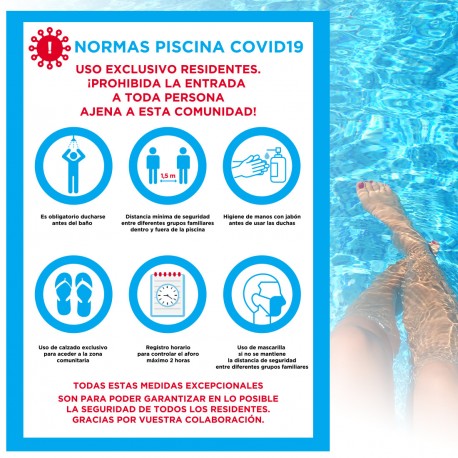
Visible information about the safety status of the pool
Users will be reminded, through visible signage or public address messages, of the hygiene and prevention rules to be observed, pointing out the need to leave the facility in the event of any symptoms compatible with COVID-19.
In the most modern public pools, the user will be able to view the latest records through:
- Public Screen: Installed at the reception or at your usual information point. Every 15 seconds it shows the values recorded in each glass.
- QR code reading: Users scan the Qr code from their own mobile device and can view the pool information.
- Telematic communication: You can also include a direct link on your website or social networks where they can consult the water and air quality parameters even before going to the facility.
Posters for hygiene and prevention of Covid in community or public pools
In response to the management and information needs of the public that are presented to us in the context of Covid-19, different posters must be applied for correct safety in the pool against the pandemic.
Distance sign for bathing in a safe pool

Poster with coronavirus prevention protocols
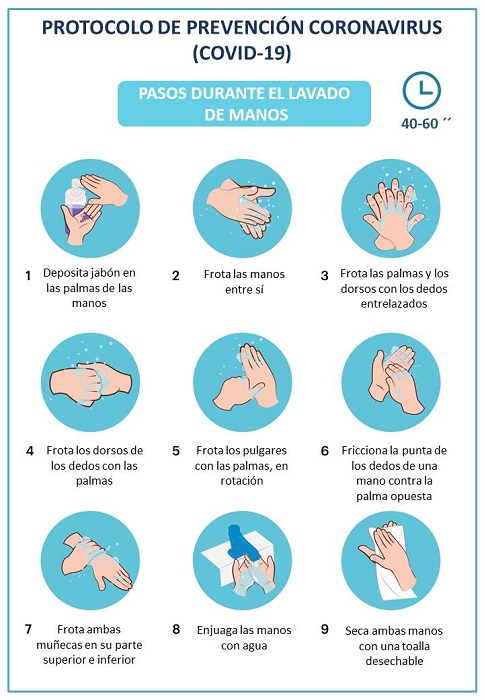
Safety distance poster in Covid-19 swimming pools

Covid-19 symptoms poster in swimming pool safety
Poster with notice of abandonment of the installation for pool safety

Sign indicating capacity at the pool

Consequently, the different capacity indicators must be visible in all areas of the pool.
Indicative sign of the capacity in the different areas of the pool facilities
- Maximum capacity sign in the facility
- Maximum capacity sign in the pool glass
- Maximum capacity sign at reception
- Maximum capacity sign in toilet
- Maximum capacity sign in locker room
- Maximum capacity sign in solarium area
- Etc
Pet pool safety

Procedures for action in the event of an accident in a swimming pool
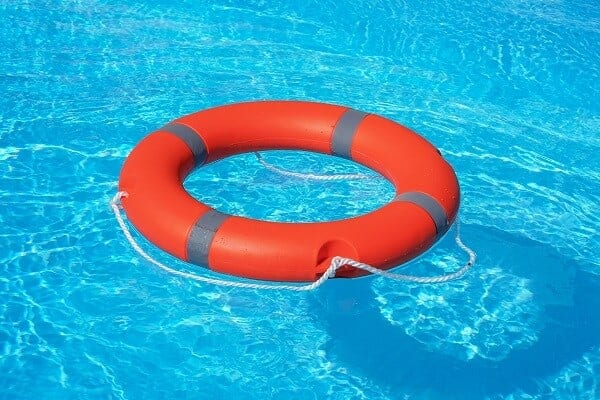
Pool accidents are common
Incidents in the pool are common
Pool accidents, like all personal injuries, can occur without warning and are usually related to the negligence of another person, company or manufacturer.
Common causes of pool injuries and deaths include:
Most common incidents in swimming pools

- Slips, trips and falls on wet surfaces
- Drowning, almost drowning
- Negligent lifeguard supervision
- electrocution
- Inadequate water levels (too low or too high)
- Lack of warning signs.
- Missing emergency flotation device
- Damaged pool exit stairs
- Malfunctioning pool lights
- broken glass
How to act at the time of an accident in a swimming pool

Actions against an injury in the pool
Here are five things you absolutely must keep in mind if you or a loved one is involved in a pool accident.
Go to the doctor or hospital immediately
Immediate medical attention is essential for anyone who has been involved in a pool accident. This is particularly true for children and victims who were submerged in water for an extended period of time. Getting to a hospital right away reduces the risk of serious and life-threatening complications.
- Proceed to follow the plan that the Red Cross warns that we should all know, that is, basic knowledge in the event of an accident.
- Above all, you must remain calm.
- Protect the accident site so that new accidents do not happen.
- Follow the Red Cross plan that limits the performance of PAS Conduct (Protect, Warn and Help).
- Obviously, the first reactions to helping the person injured in the accident are: controlling their vital functions, avoiding sudden movements and making sure they are conscious and breathing.
What type of pool safety systems to choose

Safety elements for swimming pools (especially to protect children)
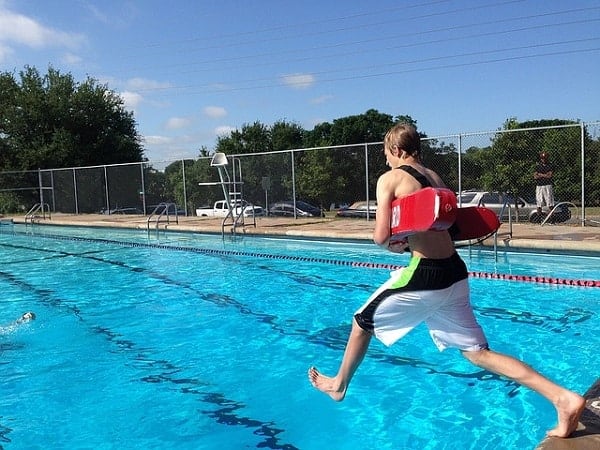
Maintaining safety in a pool is a basic and very important aspect to be able to fully enjoy it.
To do this, there are different alternatives, which, first of all, we are going to try to categorize in a very simple way. So we could differentiate between:
- External devices or systems. Those that prevent, deter or help avoid unwanted access to the pool.
- Internal devices or systems. Those that perform their function inside the glass or the pool water.
- Furthermore, the body devices, that is, those that we carry with us, such as bracelets on the wrists or ankles, necklace around the neck, or bands around the head, they really act like «warners», once the immersion has occurred, and their activity varies depending on the characteristics of the product. Some send a warning signal as soon as contact occurs in the water (such as volumetric alarms). Others allow you to configure their operation, with the user themselves defining the time after which the device must send the alarm signal.
- Body devices. Those that the user himself carries with him; bracelets, necklaces, bands…
- Finally, "virtual" systems, which are based on the use of the latest technologies to improve security, are normally more used in swimming pools for public use, and usually use surveillance cameras and different software systems, specialized in studying the behavior of bodies inside the water, proceeding, if necessary, to notify the lifeguard or pool safety equipment.
Comparison of safety devices for swimming pools
Contrast of children's pool safety system
| Pool safety device | Advantages | Drawbacks | Pool involved | Recommended pool |
| Pool tarpaulin | Optimal protection, thermal function, extends the bathing season | Installation and cost; not very aesthetic | Inground and semi-inground pool | Raised and removable pool; Inground and semi-inground pool |
| protection fence | Greater protection by preventing access; aesthetic, since it harmonizes with the garden | Facility; can be crossed or climbed | Inground and semi-inground pool | Above ground pool and removable pool; buried and semi-buried pool |
| Safety cover | Comprehensive glass protection | Facility; little aesthetic | Inground and semi-inground pool | Above ground pool and removable pool |
| Alarm | Aesthetics for discreet; ease of installation; should be considered a complementary device | Partial protection, third party intervention is necessary | Inground and semi-inground pool | Raised and removable pool; buried and semi-buried pool |
Safety devices and swimming pools
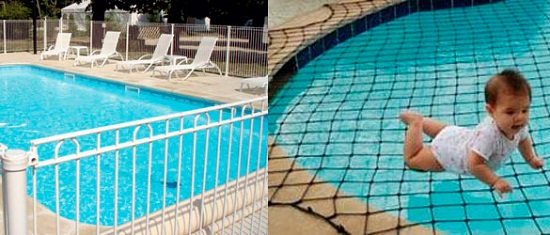
Examples of children's pool safety system
| Situation | Pool type | Suggested security device to install. |
| Home with children under 5 years old. | Inground and semi-inground pool. | Closed pool or fence with alarm. |
| Elevated and removable pool | Barrier with alarm | |
| Household with children over 5 years old or without children. | Inground and semi-inground pool. | Security or alarm coverage |
| Elevated and removable pool | Safety cover |
Essential Pool Safety Devices

Garden pool security fence
Garden pool security fence: Most reliable system in security for swimming pools: security fences
- All the security fences and barriers They allow you to delimit small, medium and large-sized pools, including their immediate perimeter.
- This solution limits access to children in two ways. persuasive, since their mere presence reminds children that bathing is prohibited without adult supervision and as an active solution, since they act as physical barriers.
- Although fences are not impassable, they are the most effective safety measure in children's pools; providing a first layer of protection, which in combination with others (covers, alarms, etc.) allow 'shielding' a pool.
What type of pool safety fences to choose
- It is recommended to choose fences that exceed one and a half meters in height; without handholds or crossbars that make climbing possible.
- It also shouldn't have cavities larger than a golf ball; Otherwise, children could insert their arms and legs and get stuck.
- Modular type fences are popular; because they adapt to the available space, joining together like bricks from Lego.
Safety accessories for pool fences
- In addition to fences, we can choose to reinforce the security of our pool with other protective elements, such as covers and tarps that cover the pools. Although their function is to prevent dirt, leaves and traces of dust from falling into the water during the months of inactivity, they act as a protection and safety system.
- Finally, we can also resort to putting alarms that they will notify us if someone falls into the water or if a child crosses the perimeter of the fence; Therefore, they are a perfect accessory if we have children at home or pets.
Is it mandatory to fence a private pool? Get to know the Swimming Pool Fence Regulations
Pool safety mesh
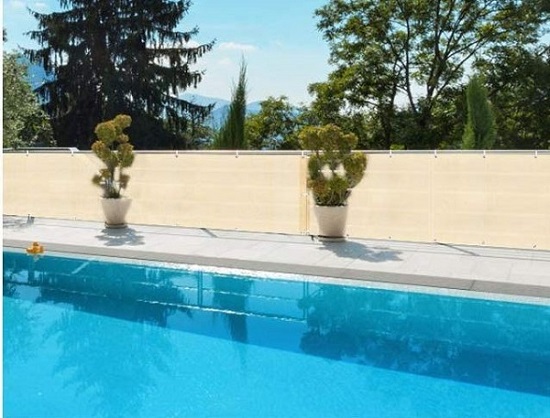
Pool protective mesh
- Total Balcony Privacy Protection: Balcony Privacy Screen Perfect full protection and beautiful decoration for your balcony and garden: HDPE material. 185g/m² high-density polyethylene fabric. The fabric resembles a high-density plastic mesh and is more breathable, not completely opaque but slightly transparent. The material is light and soft and has the function of protecting privacy and achieving a certain decorative effect.
- Anti UV Garden Privacy Screen: The balcony mesh cover blocks the fence from harmful UV rays. Balcony privacy screens can dramatically reduce temperature and create a cool and comfortable outdoor space. Balcony privacy screens can provide you with absolute privacy, while ensuring free air circulation, sun protection and air circulation reach a balance for a more comfortable space.
- High Quality HDPE Fabric: Tear resistant, weather resistant and UV protection. The net privacy screen is made of 185GSM high-density polyethylene material, which has the characteristics of tear resistance, fade resistance and abrasion resistance, and is durable. Not only that, the balcony privacy screen can be used in various weather conditions, such as wind, rain.
- Wide Range of Use: The good protection performance of the balcony protection cover can give you the privacy protection you want, such as holding family gatherings or private parties. It also reduces the chance of your dog barking when meeting strangers. It is the perfect choice for backyards, terraces, swimming pools, curtains, courts or other outdoor areas.
- Quick and Easy Installation with Cable: The privacy screen is equipped with dense eyelets, a 24 meter long rope and 30 cable ties, you can use the cable ties to fix the privacy screen (the cable ties are included in the package). Easy to install or disassemble without tools, it can be easily attached to any railing with the help of the included tear-resistant cable, cable ties, and aluminum grommets at the top and bottom.
Product description: pool safety mesh

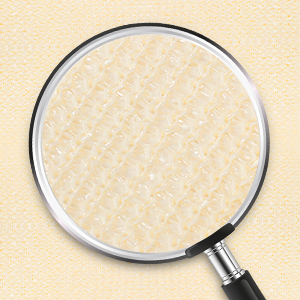 |  |  |
|---|---|---|
| High Quality HDPE FabricThe net privacy screen is made of 185GSM high-density polyethylene material, which has the characteristics of tear resistance, fade resistance and abrasion resistance, and is durable. | Easy and Quick InstallationThe privacy screen is equipped with dense grommets, a 24 meter long rope and 30 cable ties, you can use the cable ties to fix the privacy screen (the cable ties are included in the package). | Total Privacy ProtectionThe fabric resembles a high-density plastic mesh and is more breathable, slightly transparent. The material is light and soft and has the function of protecting privacy and achieving a certain decorative effect. |


Buy WOKKOL safety pool mesh
Buy pool safety mesh
Price of safety mesh for beige pools
[amazon box=»B08R5KJBSP»]
Price of safety nets for gray pools
[amazon box=»B08R5KJBSP»]
Buy best-selling pool safety mesh
TOP price Sales mesh pool security
[amazon bestseller=»pool safety mesh» items=»5″]
Pool lighting
Security advantages with lighting in the pool
- The first advantage is that the lighting in the pool contributes to its safety (assuming that it is used at night).
- Just by having lighting in the pool, you will surely pay for it much more.
- At the mercy of the pool spotlights, the atmosphere and aesthetics will look more designer, since the lights provide harmony and beauty.
- In conclusion, an illuminated pool achieves an unmatched value than one that is not.
Pool covers
Safety for swimming pools with cover
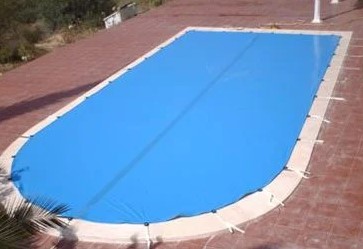
In addition to guaranteeing protection against risks of accidents and drowning, a pool cover Improves bathing comfort by prolonging the season and significantly increasing the temperature of your pool water.
A pool cover can be of different types (advanced, sliding eaves, telescopic, removable or fixed) and its fixing system provides genuine security similar to that of a protective fence.
Pool covers must comply with the current regulations:
- The safety lock must be with key and lock;
- low pool covers must support the weight of an adult weighing 100 kg;
- Depending on its dimensions, check with the town hall if a building permit or preliminary declaration of works is necessary. ;
Finally, specific page on the topic: Pool covers.
Types of safety covers
- Protective covers. We can find them high, low, telescopic... Not only does it act as a security system, but it can also act as a cleaning and air conditioning system...
- Safety covers. Also known as pool tarps. In this case, they are usually designed to withstand the weight of up to an adult, so that they do not sink if a child passes or falls on its surface.
- Automatic slat covers. Its use is similar to that of other covers or covers but with the exception that it is a system in which the slats (usually made of various types of PVC or polycarbonate) are in direct contact with the pool water, floating on she.
- Safety cover for removable pools.
Safety cover for removable pools

Made of durable vinyl of 0,18 millimeters, this cover is suitable for inflatable and round pools, and can be purchased in five sizes. It has a rope to hold it when it is windy and small holes to prevent water accumulation.
Buy safety cover for removable pools
Price to buy safety cover for removable pools
[amazon bestseller=»safety cover for removable pools» items=»5″]
Pool alarm

What are pool alarms?
All the pool alarms They are the quickest security devices to install and also the most economical. Unlike the pool protection fences, tarpaulins and safety covers, a pool alarm does not in itself constitute a 100% effective protection element, in the sense that an alarm emits a warning and requires the intervention of a third party.
There are two types of alarms for swimming pools:
- La peripheral detection alarm monitor with infrared rays and jump if someone crosses the perimeter;
- la immersion detection alarm catches any dive, voluntary or not.
The conditions of use, installation and manufacturing are governed by the standard NF P 90-307:
- The first point is that the alarm emits a signal in case of power or battery problem;
- Regarding the alarm, it must activate 24 hours a day (except during bathing periods) and should not activate accidentally;
- The alarm detects immersion, the fall of a body and raises the alarm by triggering the siren ;
- It is worth mentioning that any deactivation cannot be carried out by a child under 5 years of age;
- Regarding the alarm, it allows recording and mark in time the last 100 manipulations ;
- Finally, the alarm status can be monitor at any time (on, off, faulty).
Types of alarms for swimming pools
- Perimeter alarms. With a similar operation to the presence alarms used in many homes, they warn us when a body exceeds the fictitious line generated between the different posts that make up the operating structure of the alarm.
- Volumetric alarms. Capable of detecting, through its different sensors, the immersion of a body inside the pool, recording the movement and waves generated in the water.
- Opening alarms It is another excellent child safety measure in swimming pools, whose area will be connected to the rest of the house by one or more doors. If not, they can always be implemented in the perimeter fence that we previously recommended.
Security advantages with the pool alarm
- Maximize the safety of your pool with a pool alarm with immersion detection.
- It is also important that you have an alarm that activates when it detects that a heavy object or person, for example, a child, enters the water. This way, even if you are not observing at the moment, you will be able to know what is happening and take the necessary actions.
- The alarm must come integrated with a siren that make a loud sound when it detects the fall of a body into the water.
- Better that it also has an automatic monitoring mode that activates after bathing.
- Finally, purchase a self-contained pool alarm that is easy to use and install.
Swimming pool alarms problem
Disadvantages of pool alarms
- It is a device that alerts the adult that someone has entered or left a certain previously delimited area.
- The problem with this security mechanism is that it usually fails frequently and since it does not have a physical barrier, it is a system that we never recommend.
- For these reasons, the pool alarm security element can be a good ally to minimize undesirable fatalities.
Buy pool alarm
Pool alarm price with immersion detection
[amazon box=» B08D9V3NN7, B00BJ5W9JK»]
Pool Patrol Floating Alarm
La Pool Patrol floating alarm It is presented as an alternative to the usual volumetric alarms, usually located at the edge of the pool.

Its operation is very simple since you just have to leave it floating on the water of our pool and the device will notify us when a child, a pet or some object of significant volume reaches the inside of the pool.
Thanks to we can adjust the sensitivity of the equipment, we can avoid false warnings produced, for example, by the wind or small elements.

The Pool Patrol floating alarm is not only suitable for use in inground pools, but also for elevated or removable pools, spas, small ponds, etc.
The alarm is designed with highly durable plastics, prepared to resist cracking and the usual loss of color over time when exposed to the elements, in direct contact with the sun and the different treatment products used in pool water.
The electronic components of the equipment are controlled by a microprocessor., using the latest in transmitter technology.

Based in United States, Pool Patrol manufactures its alarms in compliance with the ASTM F 2208 safety standard, which guarantees its quality and performance.
As always, we must not forget that the Pool Patrol floating alarm or any other device does not replace the necessary supervision of an adult. Its purpose is to complement the safety in our pool, not to become the only element of said safety.
To conclude, if you want more information, go to: Pool Patrol
Video surveillance equipment for swimming pool
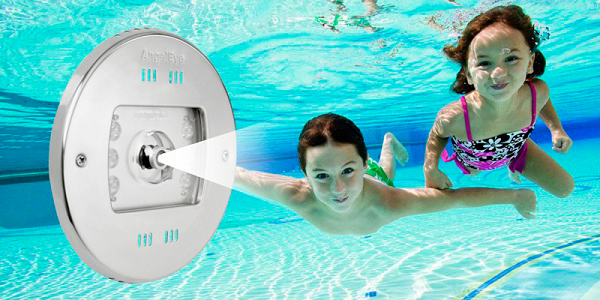
What are video surveillance equipment for swimming pools?
- Video surveillance equipment for swimming pools They are systems supported by the use of cameras, either outside the pool, inside (underwater shots), or both, thanks to which we can maintain the security of the facility, in real time.
- Some of them, also supported by complex computer software systems, which notify us of any incident.
Smart cameras applied to swimming pool security
When we talk about security cameras, surveillance systems quickly come to mind to prevent robberies and assaults at home. Well, currently the number of families that also use this type of equipment is growing. smart cameras face to increase safety in swimming pools.

As we can imagine, they are systems that are used to control the outside, the pool environment, not inside the water.
Its operation is very simple, since its objective is to warn when something unusual happens in the area of influence of the camera, through motion sensors. For example, if a child enters that “protected” area, the system can notify us through a acoustic and/or light signal.
Likewise, in the vast majority of these smart cameras, we can receive notices through our smartphone.
Furthermore, this type of cameras allow us to carry a control of protected space (in this case, the pool environment), in real time. Generally, through specific apps from each manufacturer.
We can configure motion detection zones of the camera depending on our needs, which offers an enormous range of customization.
Smart cameras are another example of how to use technological systems to make our daily lives easier, Like increase security.
We leave you with a video example of a smart camera from the Ring brand, a recognized international specialist.
EVA Eveye, HD security underwater pool camera
Recognized worldwide for their wide range of high-end LED lighting products, EVA Optic surprises us with this new device.

La EVEYE camera cannot be considered on its own as a security device, but it can be used as an important support for the benefit of safety in swimming pools (private or public) or fountains.
Its uses can be multiple, as much as security supportas helps in supervising training (swimming and/or diving), swimming classes, aquatic initiation of babies and young children...
Another very interesting aspect is its possible use in aquatic centers, helping lifeguards themselves to control exits on slides, streams or rapids, where it is sometimes difficult to fully control the bathers.
EVA Eveye cannot be surface mounted or embedded in the pool glass, but its assembly is suitable for EVA A-Series niches or for many other niches already existing in the market.
Eveye Includes a high definition camera (HD TVI; High Definition Transport Video Interface) with 1080px resolution, and a range of 120º viewing.

Each TVI recorder of the images recorded by the camera with hard disk, supports a maximum of 4 associated Eveye devices. In any case, if the installation already has its own recorder, the underwater camera can be sold separately.
In addition, it is possible to send the recordings to any digital medium, phone, tablet, screen... And also, there is the possibility of taking “screenshots” in real time, and recording them on a network or hard drive.
EVA Eveye is suitable for use in water with a maximum temperature of 35ºC, riding a maximum depths of 10 meters. Its IP protection level is IPX8/IP68, while the power box has IP65 protection, and its temperature range goes from negative 20ºC to 35ºC.
EVA Optic offers a 2 years warranty for this underwater camera.
More information at EVA Optic or at its official distributor in Spain, PS Pool Equipment.
Pool ladder
The vital importance of the ladder in the pool
Access to the pool with security
- At the level of safety and operability, it is essential to implement a ladder for good access to and exit from the pool.
- The best option is a pool with a built-in ladder integrated into the interior of the pool with a small platform to enjoy games, sunbathe...
All the pool ladders They are basic to avoid major accidents and to be able to access the interior of the pool more easily.
Benefits and functionalities of the pool ladder
Pool stairs always bring benefits, they just have to be placed in their ideal location.
- First, pool stairs act as support for bathers when entering the pool safely.
- That is to say, the stairs play the role of preventing slips and preventing too much effort from being used to enter and exit them.
- Furthermore, if there are children, elderly people at home or perhaps people with difficulty moving, it is essential to provide this safety element so that they can enjoy the pool without problem.
- Another point in its favor is the personality and aesthetics that can contribute to the attractiveness of the pool.
- There are multiple designs with very different characteristics depending on taste and need, which They adapt to each situation, aesthetics, budget: There are the built-in pool stairs, the prefabricated ones and the removable ones.
- Thanks to the multiple ladder options currently on the market, you can put one in your pool when it is being built or when it is already finished.
Ladder saves pets / saves dogs
Advantages Ladder saves pets / saves dogs
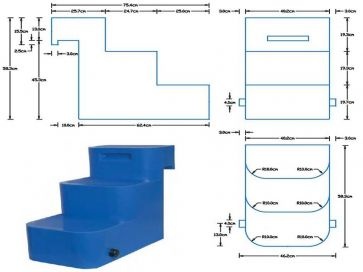
- One of the main advantages of this ladder is to facilitate access both at the entrance and at the exit of the pool.
- If the animal falls into the water, it can easily get out of the water without needing help, guaranteeing the safety of your pet even if you are not present.
- Easy to install, it attaches to the traditional stainless steel ladder (not included).
- With the pet-saving ladder you can enjoy a pleasant and safe bath for you and your pet.
- Includes two ballast (support point)
- Does not include stainless steel bar.
- Supports up to 75 Kg
- It has 3 steps with non-slip engraving.
- Ergonomic carrying handle integrated into the top step for easy placement and removal.
- Compatible with most stainless steel ladders (AstralPool, Flexinox, etc.).
- Only valid for animals. Not valid for human use.
TOP price Pet-saving ladder
[amazon box=»B00VF4VFWC»]
Cleaning
The use of chemical substances keeps the water clean, healthy and in optimal conditions for bathing. But chlorine and bromine tablets; Algaecides and other cleaning products are a double-edged sword. Poisoning due to ingestion or inhalation of these chemicals poses serious dangers to human health.
These products for pool maintenance They must be stored out of the reach of children; given his taste for putting his hands to his face, whether to taste or smell. The tool shed; The basement or the treatment plant itself are appropriate spaces to conserve these chemicals. For added peace of mind, we will store your containers in containers protected with key or combination locks.
Is it possible to have pool water suitable for fragile or sensitive skin?

Allergy to chloramines
- Many people talk about a chlorine allergy, with diverse symptoms, ranging from skin irritations to red eyes.
- It is actually a reaction to chloramines, a byproduct of chlorine that develops in pools that are not properly maintained, where chloramines build up.
- When chlorine comes into contact with organic remains such as hair, skin scales, sweat or saliva, for example, a chemical reaction occurs that generates volatile chemical compounds, chloramines.
Healthy pool disinfection treatments and accessories
We encourage you to click on the links to learn about the different types of pool disinfection that are healthier than chlorine.
Safe pool with saline chlorination
- Salt chlorination is a good alternative, because, although the final objective of the process is to produce chlorine, this system creates less chloramines.
- And there is no need to worry about salt water, since the salinity rate of pool water treated with salt chlorination is low and close to that of human body fluids. This salt level is estimated to be about 3,5 to 4 g/l, while that of tears is 7 g/l.
Pool coating with reinforced liner
Grade 3 non-slip reinforced sheet for pool construction stairs and benches

To begin with, the use of grade 3 non-slip reinforced sheeting on pool stairs and benches is completely recommended for safety in the pool.
We must remember that the pool stairs and benches are an access area to the pool and games in which there is very little depth, so There is a high probability of slipping or falling.
Thus, in this way, with the grade 3 non-slip reinforced sheet, you will forget the worry of undesirable incidents occurring.
Qualities of the non-slip pool liner:
- By purchasing this type of anti-slip sheet, you are guaranteeing that the product will always maintain quality, without deteriorating its purpose.
- On the other hand, public swimming pool regulations require the implementation of grade 3 non-slip reinforced sheets in swimming pools.
- All this is thanks to the composition of the non-slip reinforced liner, which makes stairs or pool benches the foot is fixed and there is no risk.
- Likewise, the non-slip reinforced sheet for stairs and benches can give a play of aesthetic contrasts to the pool and adds a component of comfort, since when stepping on it the impact is much more comfortable.
- Remember that the non-slip sheet for stairs and benches must be grade 3.
Non-slip floors for swimming pools
When it comes to pool floors, the quality of the product is very important to guarantee its effect.
Necessary singularities in pool floor safety
Pool perimeters (coping stone) and pool terraces with grade C prefabricated slabs and UV treatment.
- First of all, if we purchase a coping stone and terrace with prefabricated slabs, they must be grade C non-slip.
- Secondly, the pool stones must have an RUV (ultraviolet rays) treatment.
- In addition, this will allow us to walk even in high temperatures without causing any type of burn and even be able to sit down.
- On the other hand, these stones are also treated so that no matter how wet the ground is, bathers cannot slip (prevent head hits, sprains, falls...).
IMPORTANT: If you use the pool at night, do not forget to have ben illuminated the area to avoid unnecessary accidents.
Floor mat in case of removable pool

Not slipping when getting out of an inflatable pool or one of small dimensions is the objective of this floor protector that is sold in square, nestable pieces.
TOP price floor mat for removable pool
[amazon bestseller=»removable pool floor mat» items=»5″]
Portable Hydraulic Pool Lift
Portable hydraulic pool lift what is it
It is the smallest and most discreet portable hydraulic lift on the market. It is disassembled and assembled in just three minutes, with the advantage that it can be placed when it is going to be used and stored when not needed.
Pool shower
Why we recommend a pool shower
- The recommendation to shower before bathing is a hygienic matter for all bathers and for oneself.
- Chloramine causes serious health complications: respiratory problems, red eyes, irritated eyes, otitis, rhinitis, itchy skin, gastroenteritis….
- In addition, when we shower, we also optimize the quality of the pool water and help the filtering system (pool purifier) and disinfection (pool cleaning).
- Since another advantage is that it is totally essential to eliminate chlorine from our body, eliminate the chemical product from our body and eliminate the microorganisms that pool water contains and that can produce microbes. Likewise, it leaves the skin with a very rough texture.
Safe Pool Body Devices

BODY DEVICES. Bracelets (generally for the wrist or ankle), necklaces, head devices... all of them, aimed at notifying us when a certain contact or sinking into the pool water occurs.
Children's float vest

- Another protection system for children in the water is this neoprene vest very comfortable and quick drying.
- It is equipped with extra strong closing buckles and a safety strap adjustable to the child's crotch.
- It is available in three sizes (S, M and L) and three different models and is suitable for children between 11 and 35 kilos.
lifebuoy
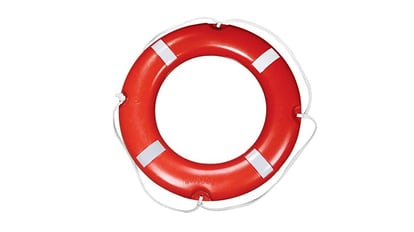
It never hurts, especially in larger pools, to have a approved lifesaving float.
Unisex booties
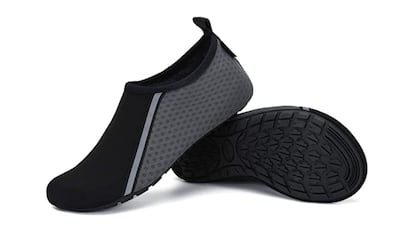
A product, suitable for children and adults, which helps prevent slipping when walking on wet surfaces such as the edges of swimming pools. They are made of a mix of polyester and Spandex and the sole is rubber.
Nextpool No Stress pool bracelet
La Nextpool No Stress alarm It will help us monitor the little ones both around and inside the pool.

No Stress includes both a collar like a bracelet or bangle, which we can place on the wrist or ankle depending on our needs.
The system allows us to configure 3 Niveles different notice depending on:
- We want to be notified as soon as the child comes into contact with water
- When contact with water exceeds approximately waist level
- When the water level reaches the shoulders

Its design is eye-catching and very attractive to children, so they will rarely try to take it off. But if this were the case, the system would still emit a warning signal.
These notices not only respond upon contact with water, but the system is also configured to alert us about the distance or distancing of the child regarding our position, and even also in the face of excessive exposure to solar rays (UV).

In all cases, the system issues warnings on our smartphone (after downloading the free app), and can associate up to 6 different No Stress devices on a single smartphone.
But even without having a smartphone, the system is prepared to be able to issue warnings through the so-called No Stress “beacon”, both sound and light.
NOTE: As we always say, neither this nor any other safety device replaces adult supervision, serving only as support.
Kingii Safety Bracelet
Safety bracelet operation
- The Kingii safety bracelet is a bracelet with a built-in inflatable.
- This bracelet will help us to get to the surface of the pool.
- In reality, the pool safety bracelet provides us with extra buoyancy (but in no case replaces the life jacket).
Kingii pool lifeguard bracelet
In this video you will see the sample of the first pool lifeguard bracelet, which is worn on the wrist, is not intrusive and does not bother even when doing sports.
Pool safety bracelets with built-in sensors
How pool safety bracelets work
- The person in question must wear the Bracelet with the sensor.
- On the other hand, we must test the condition and correct functioning of the mechanisms with the bracelet tester.
- Pool sensors: the system of sensors that we place in the pool and are intercommunicated with the bracelet.
- Alarm button. Located in strategic positions in the pool (if required it can be manipulated manually).
- Control unit: with this we manage the system, through the physical device or with a server.
- Wall unit. control device installed where the status of the system can be verified.
Video safety bracelets with sensors for swimming pools
European safety standard for swimming pools for private use

What is AENOR: Spanish Association for Standardization and Certification

AENOR what is it
The Spanish Association for Standardization and Certification was from 1986 to 2017 an entity dedicated to the development of standardization and certification in all industrial and service sectors. On January 1, 2017, AENOR was legally separated into two independent parts.
European standards that define pool safety requirements

AENOR: Spanish Association for Standardization and Certification in pool safety
AENOR, Spanish Association for Standardization and Certification, has published a set of European standards that define the safety requirements to be used throughout Europe, for swimming pools for private or domestic use, which have been developed by the European Committee for Standardization (CEN), which one ASOFAP (Spanish Association of Swimming Pool Sector Professionals) is an active part.
What is ASOFAP: Spanish Association of professionals in the swimming pool sector

ASOFAP, (SPANISH ASSOCIATION OF PROFESSIONALS IN THE POOL SECTOR), is established as an integrating and representative entity of a global nature.. Global both at the territorial level and at the agglutination level of the entire value chain of the sector; namely, Manufacturers, Distributors, Industrial-Professionals of the pool and Maintainers.
Swimming pool safety regulations of the Royal Swimming Pool Decree

Summary: ROYAL POOL DECREE Regulations, RD 742/2013.
Regulatory compilation Royal Decree on Swimming Pools
- Article 2: Definitions.2. Swimming pools for public use:
- Type 1: Pools where the main activity is, public pools, water parks, Spa pools.
- Type 2: Pools where it is the secondary activity, hotel pools, tourist accommodations, camping or therapeutic pools in health centers.
- Type 3 A: Swimming pools in communities of owners, rural or agrotourism houses, residence halls or similar.
- 8 Owner: the responsibility will be of the owner, whether a natural person, legal entity, or community of owners that owns the pool.
- Article 3: Scope of application.2. In the case of swimming pools for private use Type 3 A, they must comply at least with the provisions of articles 5-6-7-10-13 and 14 d, e, f. Communicating it to the Ministry of Health within 12 months of the entry into force of this royal decree.
- Article 4: Actions and responsibilities.1. The owner of the pool must notify the competent authority of the opening, record self-control data and incident situations, preferably in computerized format.
- Article 5: Pool characteristics.2. The owner of the pool will ensure that his facilities have the appropriate elements to prevent health risks.
- Article 6: Water treatment.3. Chemical treatments will not be carried out directly in the glass.
- Article 7: Chemical products used.Biocides used as disinfectants (sodium hypochlorite) must comply with the provisions of RD1054/2002. And the rest of the chemical substances will comply with the REACH legislation.
- Article 8: Personnel.Maintenance and cleaning personnel must have the certificate or title that qualifies them. (For the handling of biocides RD 830/2010).
- Article 9: Laboratories and analysis methods.2. The laboratories where analytical determinations are carried out in swimming pools must be accredited by the UNE EN ISO/IEC 17025 standard. To verify compliance with ANNEX I.
- 3. The kits used for routine control must comply with the UNE-ISO 17381 standard.
- Article 10: Water and air quality criteria.1. The water must be free of pathogenic organisms that pose a risk to health, and must comply with the requirements of ANNEX I. Turbidity and transparency are added to the mandatory daily analysis.
- 2. Indoor swimming pools and technical rooms must comply with ANNEX II. In which the mandatory daily CO₂ analysis will be carried out. As described in Annex III.
- Article 11: Quality control.2. a) Initial control: Analysis 15 days before opening the glass Annexes I and II.
- b) Routine control: Daily control Minimum sampling frequency Annex III.
- c) Periodic control: Monthly laboratory analysis Annexes I, II and III.
- 5. The owner of the pool must have a self-control protocol.
- Article 12: Situations of non-compliance.All those that do not comply with ANNEXES I, II AND III. Corrective measures will be adopted immediately, taking the appropriate measures to prevent this from happening again. The competent authority will be informed if so ordered, by electronic means.
- The owner will verify that they have been corrected correctly. And it will be communicated to users and to the competent authority.
- The glass will be closed to the bathroom in the following situations until they return to normal:
- a) When there is a risk to health.
- b) When ANNEX I is not complied with.
- c) When there is presence of feces, vomit or other visible organic waste.
- Article 13: Incident situations.1. Incident situations are described in section 7 of ANNEX V.
- 2. Adopt corrective and preventive measures.
- 3. Inform the competent authority by electronic means.
- 4. The competent authority will notify the Ministry of Health within 1 month through its website with the information in ANNEX V.
- Article 14: Information to the public.At least the following information will be made available to users in a visible area:
- a) The results of the last controls carried out (initial, routine, or periodic).
- b) Information on situations of non-compliance with ANNEX I or II, corrective measures and health recommendations.
- c) Informative material on preventions, such as drowning, trauma, injuries, sun protection.
- d) Information on the chemical products used.
- e) Information on the existence or not of a lifeguard, and the addresses and telephone numbers of the nearest health centers.
- f) The rules, rights and duties of using the pool for its users.
- Article 15: Submission of information.1 The competent authority will send to the Ministry of Health before April 30 of each year, the information from the previous year in ANNEX IV.
- Article 16: Sanctioning regime.Failure to comply with this royal decree may give rise to the application of sanctions according to Law 14/1986 and Law 33/2011.
- The Ministry of Health will prepare an annual technical report on the quality of swimming pools, which will be made available to citizens on its website.
This royal decree will come into force two months after its publication in the official state bulletin. The orders of May 31, 1960 and the order of July 12, 1961 are repealed.
Royal Decree Regulation of Swimming Pools
Immediately afterwards, you can download the regulations of the NEW ROYAL DECREE ON SWIMMING POOLS, RD 742/2013, of September 27, the new Royal Decree on public and private swimming pools.
Safety rules for private pools

Safety regulations for private pools
There is a European Law that regulates the protection of all private swimming pools
- Law No. 2003-9 of January 3, 2003.
- 1st decree of the law: n°2003-1389 of December 31, 2003
- 2nd decree of the law: n°2004-499 of June 7, 2004.
- Furthermore, Spain does not require state legislation that regulates safety in swimming pools.
- In our case, the obligation to regulate is borne by each autonomous community, adapting and establishing its own rules, as well as at a subordinate and specific level by the neighboring communities, if applicable.
- There are also municipal ordinances regulating building works and activities.
3 general pool safety rules

These are three standards that cover the general safety requirements for all types of swimming pools for private use and those more specific requirements for in-ground and above-ground pools:
3 Safety standards for private pools
- UNE-EN 16582–1:2015 – Swimming pools for domestic use. Part 1: General requirements including safety and test methods. It deals with aspects related to the structural integrity of the construction itself, with special emphasis on the minimum requirements of the materials to be used or on corrosion. It also deals with more specific aspects from the point of view of user security; risks of entrapment (openings), edges and corners, slipperiness or means of access (stairs, ramps, etc.).
- UNE-EN 16582–2:2015 – Swimming pools for domestic use. Part 2: Specific requirements including safety and test methods for in-ground pools; Mechanical resistance requirements, specific requirements for prefabricated pools and specific watertightness requirements.
- UNE-EN 16582–3:2015 – Swimming pools for domestic use. Part 3: Specific requirements including safety and test methods for above-ground pools (Pools with self-supporting walls and Pools with free-standing walls). This also includes specific requirements regarding mechanical resistance for the membrane used in pools with a tubular structure and/or flexible structure.

In any case, we must bear in mind that these rules are only applicable in swimming pools for private use, understanding as such those swimming pools whose use is intended solely for the family and guests of the owner or occupant, also including use related to the rental of houses for family use.
Next, if you require more information about pool rules, go to: ASOFAP (Spanish Association of Professionals in the Swimming Pool Sector).
Basic rules to follow for safety in swimming pools
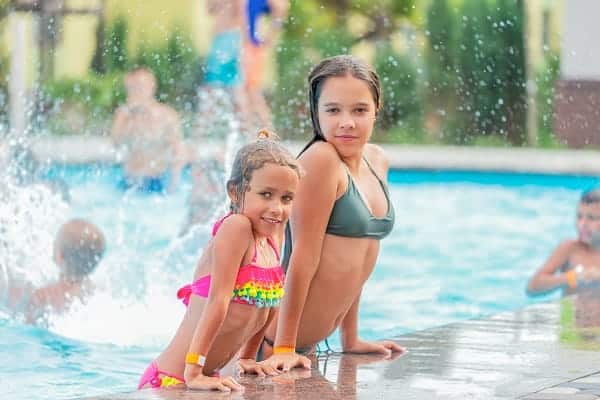
Patterns to follow in pool safety
Before starting to name the basic rules for pool safety, It is essential to emphasize that it will be essential to remember the preventive rules on a daily basis.
Above all, remind children of the regulations: do not run around the pool, avoid bathing alone, avoid bathing after eating, etc.
- Have a first aid kit near the pool.
- Access the terrace area with flip flops.
- Protect yourself from the sun
- Take into account the digestion time.
- It is recommended that no one ever bathes alone
- If the water is very cold, enter it little by little.
- Appropriate behavior in the pool.
- Don't jump headlong.
- Have a phone nearby.
- Pool filters must have a lid to prevent suction
- It is advisable to have visible markings with the depth of the pool around you.
- Keep electrical appliances away from the pool
Most important tips for a safe pool
Most important tips for a safe pool
Through an educational video, the most important tips for keeping the pool in perfect condition and in conditions for a long time are detailed in a very visual way. safe and healthy bathroom.
Public pool safety regulations

Public pool safety regulations
The minimum standards that must be strictly complied with, among others established by the Club Regulations and Health Department, for the use of public swimming pools, are the following:
- Entry to people with infectious diseases and access to animals is prohibited throughout the facility.
- Dressing and undressing in the locker rooms. You will not be able to access the swimming and grass area with shoes and street clothes, only a swimsuit and some clothing to protect yourself from the sun (t-shirt, blouse or similar) will be allowed.
- Shower before bathing.
- Use the closet. Those who do not want to use this service will store their clothes and shoes in bags.
- Keep facilities clean. USE THE TRASH CANS. Any type of food that could dirty the premises is prohibited. Use the bar terraces to give the children a snack.
- Smokers use ashtrays and do not throw cigarette butts on the floor. SMOKING IS PROHIBITED IN THE BATHROOM AREA (PEDILUVIOS).
- For small children (babies) who cannot take care of themselves, their parents or elderly people may bathe them in the Small Pool. In these cases, they must remain at the edge of the pool but not walk through the center of the water playing with them.
- Likewise, the baby chair may be taken to the bathroom or grass area, but not walked around the area. THERE ARE CHANGING TABLES FOR BABIES IN THE CHANGING ROOMS.
- Street or sports shoes must be left in bags and never loose around the premises. (Only bathing flip flops are allowed). No type of footwear is allowed on the grass and footbath area.
- Do not sit on stairs and access ramps between pools that make passage difficult.
- Avoid dangerous games, races and practices, and do not jump into pools without first looking to see if there is anyone underneath. Accidents have already occurred for this reason
- Avoid voices, disturbances, any games, devices, radios, toys, etc., and maintaining attitudes that may disturb other users. FLOATS, MATS AND SIMILAR INFLATABLES ARE NOT ALLOWED
- Young people, do not jump over the enclosures, and use the access doors, avoiding damage and possible accidents.
- Do not introduce any glass object or sharp material into the bathing area.
- In the footbath area, do not pass chairs or hang towels to sunbathe.
- Make use of a single chair to sunbathe.
- Once bathing hours have ended, you will only be allowed to stay in the terrace area of the Bar.
- Respect the hallway signs on the bar terraces and do not place tables or chairs that make passage difficult. Also respect the delimited Television area.
- The tables on the terraces, as there is no waiter service, must be left clean once used so that they can be used by those who arrive later. BE CONDUCT IN THE USE OF TABLES/CHAIRS AND DO NOT HOARD THEM WITHOUT USING THEM.
- If a glass or bottle breaks, ask the bar counter for a broom and dustpan, and quickly remove the glass to avoid stepping on it.
- Do not hang towels or clothing on the railings of Pools and Terraces.
Community pool regulations

Who sets the standards for community pools?
Since 2013, community pools have been subject to a royal decree that collects and analyzes the basic health criteria of swimming pool regulations at the national level.
However, there is some controversy regarding the rules, since there is no common criterion about “what is considered a community pool.” In fact, the definition varies from one Autonomous Community to another, so the regulations are not the same either.
Hire civil liability insurance for a community pool
In communities of owners with a swimming pool, civil liability insurance must be taken out.
Note that the Horizontal Property Law It does not require communities of owners to take out civil liability insurance to deal with this type of mishap, although it is recommended. In fact, in many Autonomous Communities it is mandatory to have certain liability insurance.
Who should ensure compliance with the safety regulations of the community of owners?

The community of owners or the property manager must ensure compliance with the regulations and the owners must cooperate.
They are also obliged to pay all the payments that correspond to them related to the community pool, whether they use it or not.
In fact, in the event that any accident in the pool or its surroundings, the community of neighbors must assume responsibility, according to the Horizontal Property Law. Even, depending on the case, the community must compensate the person who suffered the accident.
However, if this is due to misuse of the facilities or some reckless act, the responsibility will be that of the person who acted recklessly.
Equitable standards for safe community pools

Mandatory rules for community pools
Leaving aside that each Autonomous Community can establish its own guidelines in this regard, All community pools are required to follow certain rules regarding sanitation, safety and maintenance.
- Health. Water hygiene must be guaranteed through approved purification and cleaning systems, as well as hiring qualified maintenance personnel.
- Rules of use. The schedule, capacity and what is or is not allowed to be done in the pool and its area must be perfectly specified and must be stated in a place accessible to all users, such as at the entrance to the pool, and within the installations.
- Security. The depth of the pool cannot exceed three meters. If there is also a children's pool, it may not exceed, in any case, a depth of 60 centimeters.
- Health. Water hygiene must be guaranteed through approved purification and cleaning systems, as well as hiring qualified maintenance personnel.
- Rules of use. The schedule, capacity and what is or is not allowed to be done in the pool and its area must be perfectly specified and must be stated in a place accessible to all users, such as at the entrance to the pool, and within the installations.
- Security. The depth of the pool cannot exceed three meters. If there is also a children's pool, it may not exceed, in any case, a depth of 60 centimeters.
- The perimeter surrounding the pool must be built with non-slip material and must measure at least two meters deep.
- The pool must have two adjacent showers, at a minimum, and its use is mandatory before bathing.
Regulations that vary in community pools depending on the autonomous community

Variants of safety rules in community pools
- Hours may vary depending on one neighborhood community to another, but in general the community pools are usually open, at most, from 8:00 a.m. to 22:00 p.m.
- The capacity, for its part, will vary depending on the size of the facilities. However, most neighborhood communities have established a maximum capacity of 75%.
- Regarding age, there is a large legal gap in this regard because the regulations do not indicate a minimum age for use. In general, children under 14 years of age cannot use the facilities if they are not accompanied by an adult.
- Pets will not be able to access the facilities a priori, although some neighborhood communities may approve their access, as long as they are accompanied by their owner, tied, are not dangerous and do not dirty the area.
Community pool safety recommendations
Community pool safety tips

- There are also certain recommendations in this regard, although they are not considered standards, such as the use of specific, non-slip footwear in all facilities, as well as the existence of changing rooms.
- Hiring a lifeguard is also not mandatory but is highly recommended. Again, the regulations will depend on the Autonomous Community in which the community pool is located, but if the neighborhood community can afford it, having a lifeguard to ensure the safety of all bathers can avoid serious problems.
When is it mandatory to hire a lifeguard?

What are lifeguards in charge of?
They are in charge of ensuring that the pool rules are met and that the established coexistence is respected.
This will lead all bathers to enjoy the facilities or space, and will avoid dangerous accidents.
Training lifeguards for pool safety
Among the training, there is a first aid course to know how to act in different cases, such as cures, anaphylactic shock, cardiopulmonary resuscitation, cardiorespiratory arrest, use of the defibrillator...
Furthermore, this first-aid training they receive must be carried out by health personnel, such as nurses, doctors or firefighters.
When should you hire a lifeguard?

Although swimming pool regulations also regulate capacity, hours and water health, today we will focus on whether or not it is necessary to hire a lifeguard.
It is not mandatory to hire a lifeguard, but it may of course be a good option to hire one during pool use hours.
There is no regulation that regulates the need to hire a lifeguard at the state level., so we must consult the regulations of our autonomous community.
When is it mandatory to have a lifeguard in a community pool?

Is it mandatory to have a lifeguard in a community pool?
An unsupervised pool can be an unsafe place, especially if there are children playing in it. However, there is no state regulation, but rather Each autonomous community dictates its own rules.
As a general rule, it is established that pools for collective use of 200 square meters or more, must carry out the hiring of a lifeguard with a valid qualification.
That is, a certified lifeguard will be required. Rescue and Aquatic Lifesaving Activities issued by a competent body, or a private entity qualified for this type of qualification.
What number of lifeguards should my neighborhood community have?
Depending on the size of the pool, more than one lifeguard will be needed. The number of lifeguards will be the following:

- In swimming pools between 200 and 500 square meters the services of a lifeguard
- Between 500 and 1.000 square meters of water surface, it will be necessary to hire two lifeguards.
- When the pool surface exceeds one thousand square meters of water, there will be one more lifeguard for every 500 square meters.
That is, if a pool has 1500 square meters, 3 lifeguards will be necessary, however, if it is 2000 square meters, 4 lifeguards.
Ensure the safety of swimming pools with the role of a lifeguard

The lifeguard will respond with the following tasks:
- Firstly, its intrinsic function is Surveillance and rescue: The routine role of a lifeguard is to monitor activity in the waters. Thus, in the event that someone is in danger or carrying out dangerous activities, the lifeguard has a whistle to alert those involved and in the worst case scenario they come to the rescue of bathers.
- Secondly, they are prepared to handle any situation emergency when someone is seriously injured or submerged underwater. as they continue to develop their skills both in the water and in the classroom, so
- Furthermore, you can exercise a First Aid administration; From cuts and burns to drownings and heart attacks, they have life-saving first aid and CPR skills.
- On the other hand, An important part of a lifeguard's job is making sure the facility is safe. This helps prevent injuries and keeps pool goers safe all day long.
- And, finally, they can also play a active role in educating people about pool safety And the water; In this way they can help instruct children about pool safety rules.
